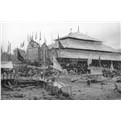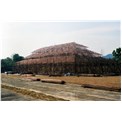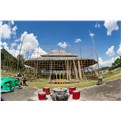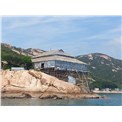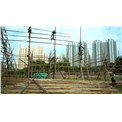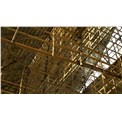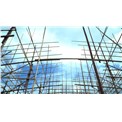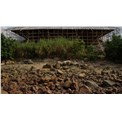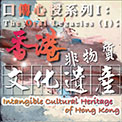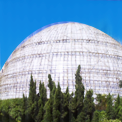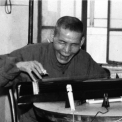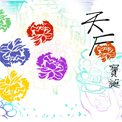-
History & Society
- Education in Pre-war Hong Kong
- History of Taikoo Sugar Refinery
- Hong Kong Products Exhibition
- Local Festivals Around the Year
- Post-war Industries
- Pre-war Industry
- The Hong Kong Jockey Club Archives
- Tin Hau Festival
- Memories We Share: Hong Kong in the 1960s and 1970s
- History in Miniature: The 150th Anniversary of Stamp Issuance in Hong Kong
- A Partnership with the People: KAAA and Post-war Agricultural Hong Kong
- The Oral Legacies (I) - Intangible Cultural Heritage of Hong Kong
- Hong Kong Currency
- Hong Kong, Benevolent City: Tung Wah and the Growth of Chinese Communities
- The Oral Legacies Series II: the Representative List of the Intangible Cultural Heritage of Hong Kong
- Braving the Storm: Hong Kong under Japanese Occupation
- A Century of Fashion: Hong Kong Cheongsam Story
Geography & EnvironmentArt & Culture- Calendar Posters of Kwan Wai-nung
- Festival of Hong Kong
- Ho Sau: Poetic Photography of Daily Life
- Hong Kong Cemetery
- Sketches by Kong Kai-ming
- The Culture of Bamboo Scaffolding
- The Legend of Silk and Wood: A Hong Kong Qin Story
- Journeys of Leung Ping Kwan
- From Soya Bean Milk To Pu'er Tea
- Applauding Hong Kong Pop Legend: Roman Tam
- 他 FASHION 傳奇 EDDIE LAU 她 IMAGE 百變 劉培基
- A Eulogy of Hong Kong Landscape in Painting: The Art of Huang Bore
- Imprint of the Heart: Artistic Journey of Huang Xinbo
- Porcelain and Painting
- A Voice for the Ages, a Master of his Art – A Tribute to Lam Kar Sing
- Memories of Renowned Lyricist: Richard Lam Chun Keung's Manuscripts
- Seal Carving in Lingnan
- Literary Giant - Jin Yong and Louis Cha
Communication & Media- Hong Kong Historical Postcards
- Shaw Brothers’ Movies
- Transcending Space and Time – Early Cinematic Experience of Hong Kong
- Remembrance of the Avant-Garde: Archival Camera Collection
- Down Memory Lane: Movie Theatres of the Olden Days
- 90 Years of Public Service Broadcasting in Hong Kong
- Multifarious Arrays of Weaponry in Hong Kong Cinema
-
History & SocietyGeography & EnvironmentArt & Culture
-
View Oral History RecordsFeatured StoriesAbout Hong Kong Voices
-
Hong Kong MemoryThe Oral Legacies Series II: The Representative List of the Intangible Cultural Heritage of Hong KongRecently Visited
Special Features of the Bamboo Theatre
The bamboo theatre is mainly of bamboo and fir members, forming beam columns and frame, with the exterior covered with metal sheeting to keep out the rain and the sun. Scaffolding masters would determine the type of bamboo theatre to be constructed, based on the landform, the designated seating capacity, and the nature of the festival activities. The two common types are the “Dragon Boat Shed” style and the “Big Golden Bell” style.
The “Dragon Boat Shed” style is so-called because its outlook is similar to the temporary bamboo sheds built for storing dragon boats in the old days. Its structure is simple, with the ridge beam and the entrance of the bamboo theatre running on the longitudinal axis. It is therefore a low-level structure, often used for annual events like the Tin Hau Festival, Yu Lan Festival, etc.
The “Big Golden Bell” structure is bell-shaped, hence the name. It is more complicated than the “Dragon Boat Shed” style in that it has another level that rises to a pitched roof. The ridge beam runs perpendicular with the entrance, thus allowing for more roof space as well as interior space. The “Big Golden Bell” bamboo theatre is therefore built for Jiao Festival of larger scales.
Although the seating capacity of a bamboo theatre may be up to a thousand, the scaffolding masters only need such basic materials as two types of bamboo poles (known as mao jue and kao jue), Chinese fir and nylon ties, and tools such as the foldable saw, awl and gloves to complete the building process in a few weeks.
Since the bamboo theatre is constructed mainly for thanksgiving opera performances for the deities, it is always positioned in front of the temple or the Jiao Festival ground on location according to Chinese customs. The stage and the temple or the shed that houses the deity should run on the same axial line, with the entrance facing each other, to offer the deity a full view of the performances.
The nature of bamboo theatre building, which only requires the simplest of materials, gives the bamboo theatre its flexibility to be constructed and dismantled at any time, on any landform and gradient. Just by their hands-on experience, from design, construction and dismantling, the scaffolding masters can do them all. They do not need complicated calculations or drawing of plans, but can start work right away, using their expertise and gauging simply by eyes and hands. The finished work is structurally safe, aesthetically pleasing, and an embodiment of the age-old wisdom of Chinese architecture.
Behind the traditional know-how, the construction of the bamboo theatre also involves mechanics and ergonomics. The load of the structure is distributed from the roof trusses down, through the various fir members evenly to the rows of load-bearing columns, to the ancillary structures on all sides, then to the ground. In terms of ergonomics, the scaffolding panels are made up of grids of three feet, which is similar to the length of the human torso. Such a standard measurement enhances the efficiency in the scaffold-building process while ensuring the work safety of the scaffolding masters.
Photos
Videos
Copyright © 2012 Hong Kong Memory. All rights reserved.






